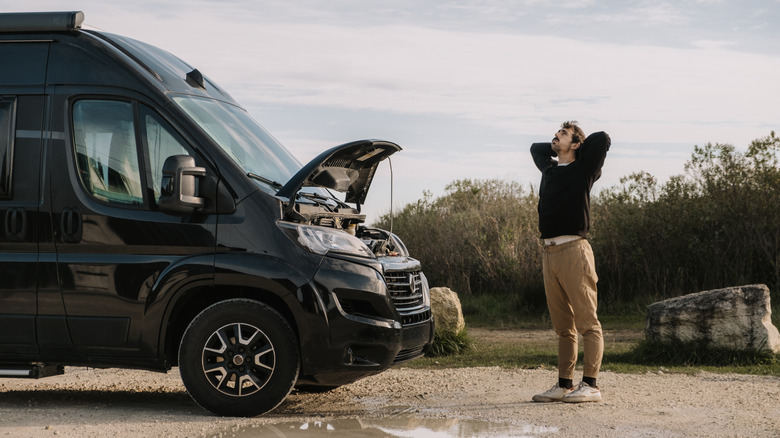Thanks to the rise of social media and companies allowing their employees to work remotely while traveling, “vanlife” has become an increasingly popular trend — with annual searches jumping by 22% — among wanderlust-fueled travelers looking for a new way to live. Plus, with so many vanlife influencers (aka, “vanlifers”) showcasing the freedom of waking up to mountain views and the simplicity of life on the road, it makes sense that so many others would be drawn to the idea of giving it all up to pack down their life into the inside of a converted van.
That said, behind all of those perfect sunset photos and highly curated Instagram feeds lies a pretty sobering reality that aspiring vanlifers don’t fully consider: how much it actually costs to maintain the lifestyle. So, before you go about selling all of your possessions, hitting the open road with nothing but a camera and a dream, and planning a full-time off-grid getaway with just you and your four-wheeled home, it’s important to understand the real costs involved in this lifestyle.
Explore spoke with Nate Murphy, author of “The Van Conversion Guide” and lead instructor of DIYhero’s official van conversion course, to get the real story behind the costs of living on the road. With years of experience as a full-time vanlifer, Murphy has plenty of insights, knowledge, and practical advice about the financial side of vanlife that social platforms don’t always show. Here’s what he urges people to consider.
Daily vanlife expenses can add up quickly
Vehicle maintenance should be a priority
When your home is also your vehicle, maintenance takes on a whole new level of importance — and it’s one of the most important details you should never forget to budget into your road trip costs. “Unlike a standard commuter car, your van is your house and your vehicle, so any downtime is a major disruption,” Nate Murphy says. “Repairs tend to be more expensive, especially if you’re far from a major town or need specialist parts.”
Realistically speaking, the nature of vanlife often means that you’ll be driving through varied terrain, which can accelerate wear and tear on your vehicle. As such, Murphy recommends having substantial savings set aside specifically for unexpected repairs: “We’ve learned to always keep an emergency fund specifically for vehicle repairs. Trust me, you don’t want to be stranded in the middle of nowhere trying to negotiate with a mechanic you just met”.
Beyond regular maintenance, the initial build costs can be significant as well. “High-end systems during the build, like lithium battery banks, diesel heaters, or rooftop A/C units, are fantastic for comfort but come with significant up-front and maintenance costs,” Murphy notes. Throw in specialized insurance that’ll cover both your vehicle and your belongings, and you’re bound to pay more than standard auto coverage.




